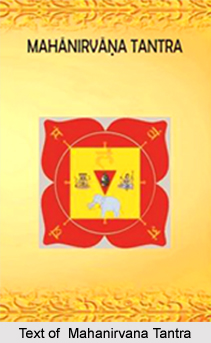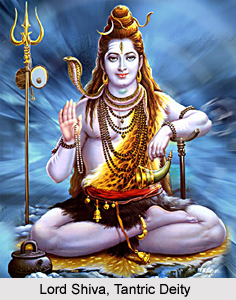 Mahanirvana Tantra, (the Tantra of Great Liberation) is a seminal Tantric text famed for its detailed descriptions of Tantric philosophy, principles and ceremonies. It was first published in the late 19th century, and was since then translated by noted victorian scholar Sir John Woodroffe, which greatly contributed to Tantra`s assimilation into canonical Hindu beliefs.
Mahanirvana Tantra, (the Tantra of Great Liberation) is a seminal Tantric text famed for its detailed descriptions of Tantric philosophy, principles and ceremonies. It was first published in the late 19th century, and was since then translated by noted victorian scholar Sir John Woodroffe, which greatly contributed to Tantra`s assimilation into canonical Hindu beliefs.
History of Mahanirvana Tantra
The text was first published around 1876 AD in Bengal, in Sanskrit (with Bengali script), with a commentary by Hariharananda Bharati, the guru of noted Hindu reformer Raja Ram Mohan Roy. Though it quickly garnered acceptance amongst more conservative Hindus, it attracted criticism from purist Tantrikas who characterised its provisions as unnecessarily conservative. Reformist and conservative Hindus specifically appreciated its exposition of the universal Brahman.
The text translated by Sir John Woodroffe is the more common first part of the Mahanirvana Tantra. The second part was widely believed to be missing and lost, and several early translations were merely of the first part. However, Woodroffe did encounter the second part of the text in the possession of a Nepalese Pandit, who refused to part with it for translation purposes, citing that some of the Mantras presented therein did not require virtue as a prerequisite for their use, thus capable of great harm. Woodroffe recounts this in the preface of his translation to dismiss misconceptions that Tantra is black magic or that Tantriks are `black magicians`. Woodroffe claims that the second part contains double the number of shlokas in the first part.
Philosophy of Mahanirvana Tantra
 The Mahanirvana Tantra is noted for its discussion of Brahman, the universal spirit, and the Kaulachara: the Kaula tradition of worship and metaphysics. It also claims, somewhat stridently, that Tantra is the only means of worship in the Kali age, where man`s descent from grace has become so grievous that Vedic rituals can no longer be considered effective. It also does not restrict rituals to higher caste worshipers, and even creates a new caste, the Samanya in addition to the four accepted castes.
The Mahanirvana Tantra is noted for its discussion of Brahman, the universal spirit, and the Kaulachara: the Kaula tradition of worship and metaphysics. It also claims, somewhat stridently, that Tantra is the only means of worship in the Kali age, where man`s descent from grace has become so grievous that Vedic rituals can no longer be considered effective. It also does not restrict rituals to higher caste worshipers, and even creates a new caste, the Samanya in addition to the four accepted castes.
A knowledge of the Kundalini and other famous Tantra and Yoga related concepts is essential to an understanding of the text, since it assumes a prior knowledge of these concepts in most cases, although some are described in detail. Due to its Shaivite origins, the Tantra does place Lord Shiva as the most significant of the trinity, and repeatedly proclaims Shiva`s primacy and his proximity to Brahman.
Structure of the Mahanirvana Tantra
The Tantra is essentially a dialogue between Parvati (Shiva`s divine consort) and Shiva, with the former asking her Lord and Husband questions regarding worship, philosophy and ethics, and the latter answering with detailed description of the Mantras, instruments (Yantras) and rituals regarding every aspect of Tantrik worship, all the while providing a rationale for all the rituals described.
The text begins with an apocalyptic proclamation of the Kali age by Parvati, who seeks to know how human beings may be liberated (attain moksha) in the Kali age, when humanity has degraded greatly from its original state of grace. Shiva agrees that these are indeed terrible times, but that the principles of Tantra and a devout acknowledging of Brahman as the universal, supreme spirit can still deliver humanity from its ills and allow it to attain salvation. Thus begins a long and detailed description dealing with almost all aspects of life and worship, starting first with the worship of the Brahman and going on to describe various other facets of Tantric practice, including the duties of the devout householder, the ascetic, and the various initiatory rituals to be observed in the Kali age.
Legacy and Influence of Mahanirvana Tantra
The Mahanirvana Tantra was the first Tantrik text to be fully translated into the English language and as such made it known in Europe, sparking off an enduring interest in Tantra that has existed to this day. It was also instrumental in legitimising Tantra in the eyes of conservative Hindu Vedic circles thanks mainly to its strongly Brahman-centric theogony and metaphysics. This melded well with Upanishadic and Vedic views and gave Tantra much needed legitimacy.
It remains a widely revered Tantrik text.



















